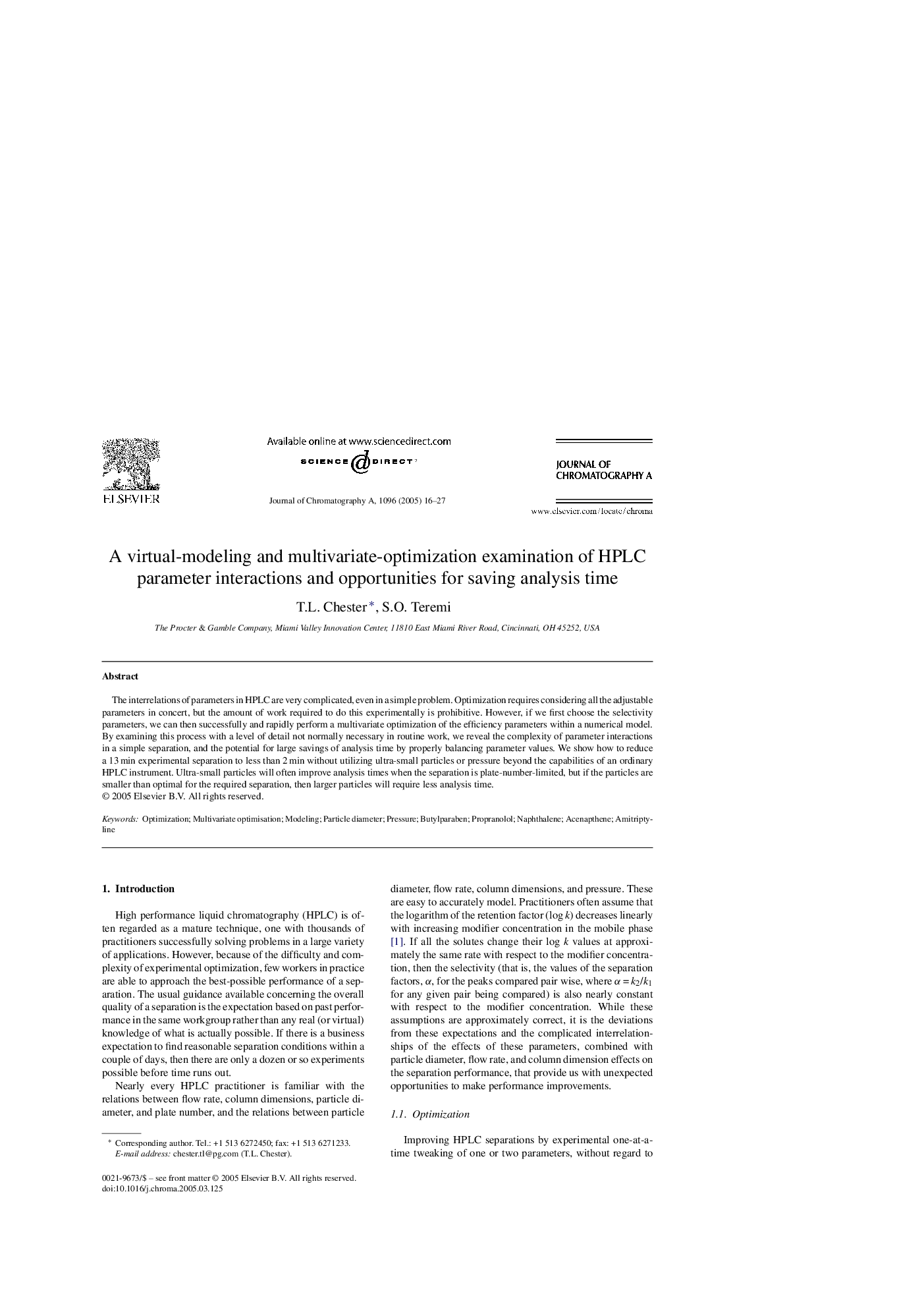| Article ID | Journal | Published Year | Pages | File Type |
|---|---|---|---|---|
| 9748540 | Journal of Chromatography A | 2005 | 12 Pages |
Abstract
The interrelations of parameters in HPLC are very complicated, even in a simple problem. Optimization requires considering all the adjustable parameters in concert, but the amount of work required to do this experimentally is prohibitive. However, if we first choose the selectivity parameters, we can then successfully and rapidly perform a multivariate optimization of the efficiency parameters within a numerical model. By examining this process with a level of detail not normally necessary in routine work, we reveal the complexity of parameter interactions in a simple separation, and the potential for large savings of analysis time by properly balancing parameter values. We show how to reduce a 13Â min experimental separation to less than 2Â min without utilizing ultra-small particles or pressure beyond the capabilities of an ordinary HPLC instrument. Ultra-small particles will often improve analysis times when the separation is plate-number-limited, but if the particles are smaller than optimal for the required separation, then larger particles will require less analysis time.
Keywords
Related Topics
Physical Sciences and Engineering
Chemistry
Analytical Chemistry
Authors
T.L. Chester, S.O. Teremi,
